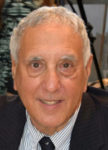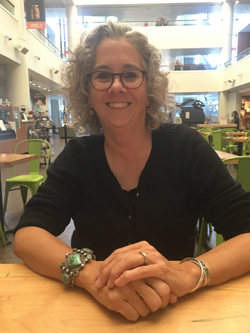By Donald H. Harrison


SAN DIEGO – The San Diego Museum of Natural History, familiarly known as “The Nat,” began attracting new visitors last July when it installed an Escape Room on its bottom floor, with the idea of inducing gamers to come to the museum. Escape Rooms grew out of video games, only instead of being virtual experiences; they are real experiences.
In the case of The Nat, the Escape Room occupies two rooms, and in solving the puzzle, one deals with botanical specimens, insect specimens, and maps. All these are instrumental in the museum’s mission of studying the ecosystems of the three California’s – the U.S. state, Baja California, and Baja California Sur.
For accomplished gamers, Escape the Nat may not be very hard, but for neophytes such as my 11-year-old grandson, Sky, and myself, it was indeed a puzzle that we were unable to solve within the 60 allotted minutes, not withstanding that the attendant, James, kindly gave us hints – as he is allowed to do. Escape The Nat is a modified experience, in that one really doesn’t have to “escape” at all. Players who might be claustrophobic, ill, or bored, may leave any time. Some other Escape Rooms require that you solve the puzzle to get out before the time elapses.
Notwithstanding our first-time inability to solve the puzzle – which has to do with counteracting a toxin that terrorists might be planning to use – Sky pronounced the challenge very enjoyable. “It was a very well thought out Escape Room,” he told me afterwards over Mac n’ Cheese in The Nat’s café. “There were some things that I just didn’t notice, and I was annoyed at myself for missing them; they were things that I should have realized. It’s kind of confusing, but I did find it fun, entertaining, and harder than I expected it would be.”
Since July, there have been more than 600 people who have tested their skill at Escape The Nat, many of whom—it is assumed – might not otherwise have been exposed to the Museum of Natural History.
Beth Redmond-Jones, The Nat’s vice president of engagement and education, told me that her museum is the first in the United States to create its own Escape Room, and possibly is the first in the world. She expressed the hope, during an interview, that other museums, especially those in Balboa Park, might design similar rooms to thereby create a tradition of gamers making museums regular stopping places.
The expectation is that after the gamers complete Escape The Nat, they will tour the museum’s other exhibits, and thus be exposed to The Nat’s core area of study. Touring the museum was exactly what Sky did while I interviewed Redmond-Jones, and it was clear later that he had enjoyed discovering various exhibits throughout the multi-story museum building.
“Escape rooms are unique and challenging in their own right,” Redmond-Jones told me. “What we really are hoping is that this presents an opportunity to do something that our scientists at The Nat do every day, which is to ask questions and solve problems, and to take clues and put things together. What I love about science is that questions lead to more questions, which lead us to new answers and new findings. So, part of this was to ‘gamify’ that process and get people thinking about what scientists do.”
She said that the game involves not only plants, but insects, and maps as well because in real life, “they are really interconnected, or work together, in specific geographic regions. … We want visitors to understand that we are — besides a place where you can come and experience exhibits and go to movies — a place where we have active research going on. We are studying the biodiversity of Southern California and the Baja Peninsula and that is really critical to us because our ecosystems are changing with urban development and pressures from climate change.”
Redmond-Jones told me that museums across the country have experienced declining attendance, prompting them to think of new ways to attract visitors. Escape the Nat is only one example. Creating interactive exhibits rather than those that require visitors to stand-and-stare is another strategy, which is strongly in evidence at the Fleet Science Center, located in Balboa Park on the other side of the Bea Evenson Fountain from The Nat. Visitors can push buttons to activate displays; run their hands through vapor; whisper into a device on one side of the room and be heard whispering on the other side; watch balls revolve clockwise around a metal basin, and generally enjoy a large variety of kinetic experiences.
At the San Diego History Center, yet another strategy has been to develop exhibitions about the history in San Diego of various population groups. There was an extensive exhibition last year about how Jews impacted and were impacted by San Diego. Currently another exhibition traces the history of San Diego County’s LGBTQ+ community.
For the Nat, “our 21+ Secret Society of Adultologists is another one,” Redmond-Jones said. We had an event based on our exhibition, ‘Hidden Gems,’ and it was called ‘Pretty Shiny Things.’ It was everything from a DJ on the rooftop with a bar, to a drag queen doing a show, to a costume party with dazzling outfits, to scientists on the floor talking about color and shiny things in nature and animals that might live in mines where gems would come from. We had our paleo lab open. We had arts and crafts, and a lot of crown-making with shiny glittery things. So, it was really fun to see a whole new audience come in who hadn’t been here before and have an opportunity to experience the museum without school kids around and in a way that is engaging to them.”
I asked what was the process that led to the creation of Escape The Nat. “We were very fortunate to receive funding from the Sefton Foundation for something called the Evolutionary Venture Fund,” Redmond-Jones responded. “Then what we did was put out a request for proposals from the staff to present ideas about things … that would put our science first and engage our visitors, and one of our Visitor Services Associates, Zack Stevens, who worked at the front desk as one the leads, is a big gamer, an Escape Room guy, and he put forward the idea of a botany escape room.
“Everyone who made a proposal put together what the costs would be and how their idea would benefit the museum, how it would align with our strategic plan, and then it was reviewed by a committee. A short list of proposals was selected, and then each of the individuals had to do a pitch to executive management and to other key staff as well as to the committee. They had to explain in 5 to 10 minutes what they wanted to do and why. All the projects were ranked and prioritized, and then we had to see how much money we had in our evolutionary venture fund to allocate.”
Stevens refined the Escape the Nat concept with Dr. Michael Wall, who is the museum’s vice president for conservation and science.
Some other recent innovations at The Nat have included an “Artist in Residence” program, which saw Larry and Debbie Kline draw James Audobon-style portraits of endangered birds, and a “Make and Take” Art Cart program, in which volunteers invited museum visitors to sketch items from the collection.
Rather than considering each other as rivals, the museums of Balboa Park often work together, occasionally developing companion exhibits. Redmond-Jones said the real competitors for visitors in San Diego are such premier attractions as the Zoo, SeaWorld, and the beaches. “We consider ourselves as Day Four on a San Diego visit, but we are moving our way up,” she said.
*
Harrison is editor of San Diego Jewish World. He may be contacted via donald.harrison@sdjewishworld.com